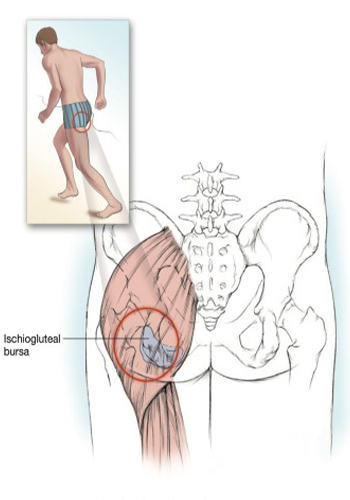Prof. Dr. Serbülent Gökhan Beyaz

Ischiogluteal Bursitis
Ischiogluteal Bursitis
November Syndrome
The ischial bursa is located between the gluteus maximus muscle and the ischial tub decosity bone. It can exist as a single bursal sac or, in some patients, as a multi-segmented series of loculated sacs. Both ischial bursa and it is susceptible to injury due to both acute trauma and repeated microtrauma. Acute injuries are usually caused by direct trauma to the bursa, such as falling on the hip, or excessive use, such as riding a horse or riding a bicycle for a long time stems. Running on soft or unstable surfaces such as sand can also cause ischiogluteal bursitis. If the inflammation of the ischial bursa becomes chronic, calcification may occur.
Treatment
The initial treatment of pain and functional disability associated with ischiogluteal bursitis includes a combination of nonsteroidal anti-inflammatory drugs or cyclooxygenase-2 inhibitors and physical therapy. Locally hot and cold application can also be useful. Any repetitive activity that may aggravate the patient’s symptoms should be avoided. For patients who do not respond to these methods of treatment, a local anesthetic is injected into the bursa and steroid injection is a reasonable next step. The injection technique is safe if attention is paid to the clinically relevant anatomy. Due to its proximity to the sciatic nerve, the injection for ischiogluteal bursitis is only based on the regional anatomy it should be carried out by people familiar and experienced in the technique. Since there is a possibility of a temporary increase in complaints after injection, patients should be warned about this and avoid repetitive activities that are likely to cause bursitis it should be recommended to avoid it.
